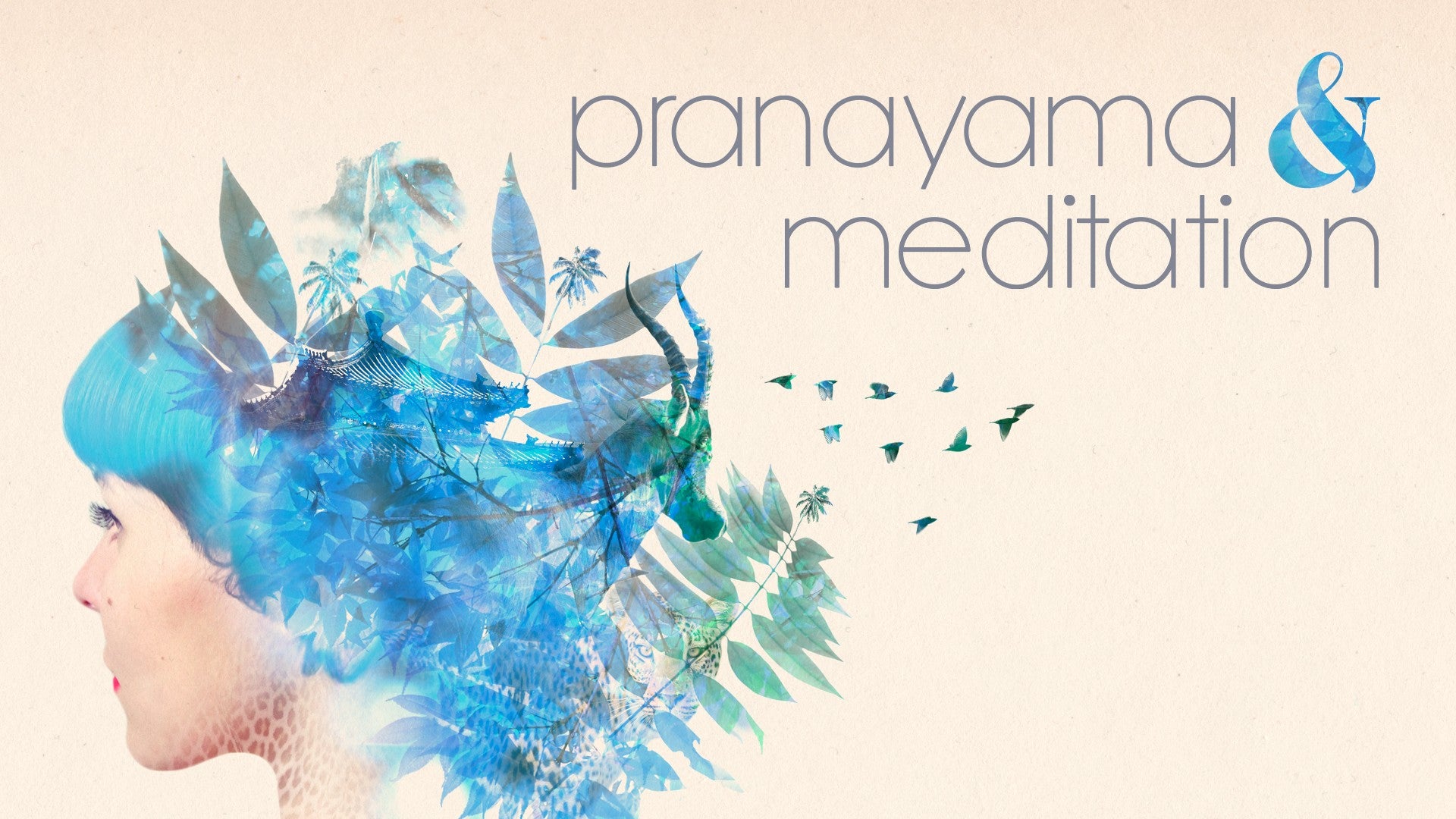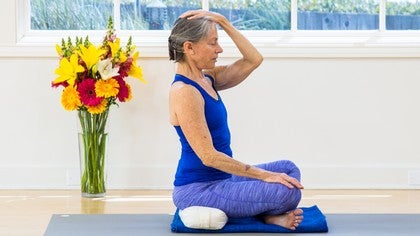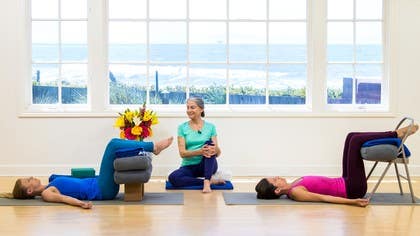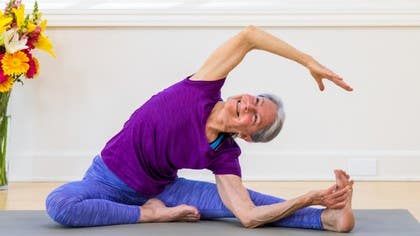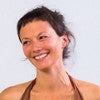Description
About This Video
Transcript
Read Full Transcript
Hi, welcome to the headwarp. It's my affectionate term for this exercise that we're about to do. And it's about just starting to tune into how we hold our head because we're usually very unconscious about the way we hold our head and so we get into habits that are actually not all that helpful and not that helpful either with respect to our upright posture. So I also think of this as circuits of inward devotion and it ends up getting one towards a very easy Jalandharabhanda which means just the effect of quieting the throat and calming the brain. So I'll turn to the side so you can see this from a profile angle how I'm using my hands and then I'll talk you through it.
Actually you can do it with me. So here we go. Okay, here we go. Bring your hands up and place the fingers right along the central line at the back of your head. The index fingers right down where the base of your skull joins your neck and the others moving up towards the top.
And just pull gently away from the midline around towards your temples. And as you do that you can actually slide your hands forward until your palms get to your temples and you're pulling gently the skin around and you might feel this actually the energy of that centering right into the third eye. So that's phase one and while you're in this phase one you can also be moving, it's just a slight movement. It's subtle but it becomes quite profound of moving your jaw and you can touch your index finger to your chin if you like feeling there's a backward energetic movement towards where the jaw is very close to the ear and then going back from the throat, the front of the throat to the back of your neck where the neck and the skull meet. And then there's this slight opening between the neck and the skull.
Then you can let one hand come down and take the other hand to the top of the skull and just pull forward from your crown and allow that to bring your awareness from the crown down over your forehead and brows and just feel it again starts to want to center right in that space between the brows. And I'm going to turn again to put it all together. This is kind of all roads lead to the third eye kind of action as well as postural improvement. So you're going to be getting that movement of the back of the skull towards the temples sliding the hands forward. Some of the fingers go towards the top of the skull, the thumb comes right down near where your jaw and your neck meet pulling the skin backward from the jaw up and around from the skull and just you can even touch now your forehead with your fingers you can bring the palms right the hearts of your palms right over your eyes and again use the thumbs and the fingers to pull the skin lightly towards that little spot between your your two eyebrows and then you can take your hands down and I think with eyes closed here is really effective to just feel what's happened in the space of the neck and the skull the skin of the scalp soft and you might you might feel that your entire posture has just become much more open and relaxed let your breath touch deeply down into your belly just sit here for another minute or two feeling into the effect of that breathing deeply down into the belly and then allowing a slight backward pressure of the belly to release the breath up and out and all the while that calmness which you've discovered through the head warp will continue rest in that resting in yourself remember that line from the chin back to the jaw to the base of the skull and that sort of sets up the whole circuit kind of find out what cues you need to give yourself for this coming together into quietude silence Now, before you open your eyes, just make it your intention to continue to, if the circuit, the circuits are still going, to not be distracted by opening your eyes.
And when you open them, just a slight little, almost like a hooded effect of the eyes looking somewhat down. There you are receiving the world as it comes to you, still centered within yourself. And then, as you bring your gaze to eye level, can you still feel that support? What do you feel? Thank you for coming into this practice, I hope you find it useful.
Namaste.
Pranayama & Meditation: Patricia Sullivan
Comments
You need to be a subscriber to post a comment.
Please Log In or Create an Account to start your free trial.
